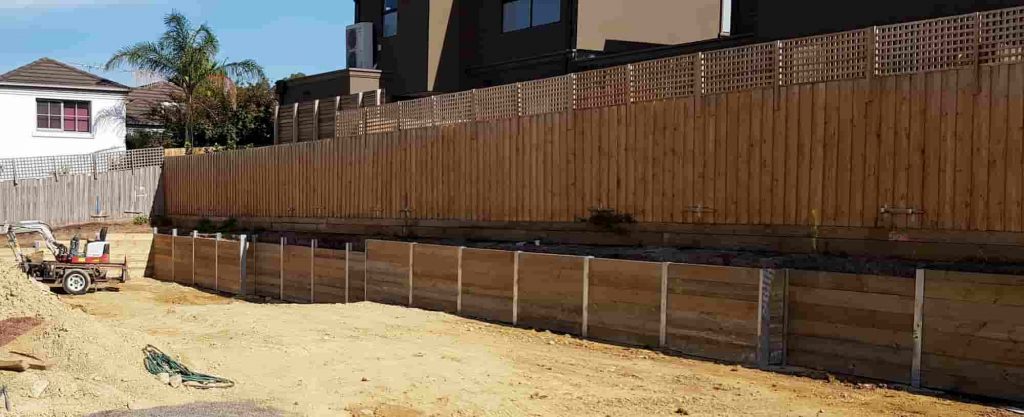Introduction
Building a retaining wall is no little feat, and it typically involves a myriad of factors to consider-- chief amongst them being permits and guidelines. Whether you're selecting timber sleeper walls, concrete sleeper choices, or perhaps H beam structures, understanding the legal landscape is vital. This short article intends to assist you through the complicated world of license requirements when working with your retaining wall contractor.
Navigating License Requirements with Your Retaining Wall Contractor
When you're ready to transform your outside area with a retaining wall, it's natural to feel excitement. Nevertheless, before the very first shovel hits the ground, there are numerous authorization requirements you should browse. Getting these licenses isn't just an administrative hurdle; it's necessary for making sure safety and compliance with regional laws.
Why Are Permits Necessary?
Permits serve numerous purposes:
Safety: They make sure that structures are developed to withstand ecological stresses. Compliance: They ensure that your building and construction abides by local structure codes. Protection: They protect property worths in your community by making sure that all construction meets established standards.
Types of Keeping Walls
Before diving into authorizations, let's briefly outline the types of maintaining walls you'll usually experience:
- Timber Sleeper Walls: These are often utilized for smaller jobs due to their aesthetic appeal and lower cost. Concrete Sleeper Walls: More durable than lumber, these walls can deal with much heavier loads however may require more comprehensive permitting. H Beam Structures: These are typically used for bigger industrial jobs due to their strength however come with their own set of permitting challenges.
Understanding Local Regulations
Researching Local Codes
Every region has its own set of building codes and policies. It's essential to familiarize yourself with these:
- Start by visiting your local zoning office. Many towns have online resources where you can look up residential building codes.
Common License Types
Here are some common permits you may need:
Building Permit: Required for most structural changes. Zoning Permit: Ensures that your project is certified with land usage laws. Environmental Permits: Required if your job impacts wetlands or other protected areas.Choosing the Right Contractor
Experience Matters
When picking a specialist for your retaining wall job, consider their experience level:
- Look for experts who specialize in maintaining walls. Ask about previous jobs similar to yours.
Questions to Ask Possible Contractors
What kinds of products do you deal with (e.g., timber sleeper, concrete sleeper)? Are you knowledgeable about local permit requirements? Can you supply referrals from past clients?The Significance of Professional Guidance
Consulting Experts
Having a professional contractor at hand can conserve you time and headaches down the line:
- They typically have established relationships with local authorities. They comprehend which authorizations are essential for numerous types of walls.
Benefits of Employing Professionals
Expertise in navigating complex regulations. Ability to identify possible concerns before they arise. Knowledge about affordable products and methods.Steps in Acquiring Permits
1. Preliminary Research
Before making an application for any permits:
- Assess whether your job requires an easy or complicated application procedure based upon its scope and location.
2. Total Your Application
Gather all necessary info for your application:
- Project plans Site surveys Material lists (including timber sleeper and concrete sleeper specifications)
3. Send Your Application
Once you've collected everything:
- Submit your application to the appropriate municipal office.
4. Await Approval
Permitting procedures can take some time; perseverance is key:
- Be prepared for possible modifications if authorities demand changes.
Potential Difficulties in Getting Permits
1. Regional Ordinances
Local ordinances may enforce constraints on wall height or product usage-- be thorough in checking these!
2. Ecological Concerns
If you're near water bodies or secured lands, extra analysis will be applied:

- You may require additional environmental assessments.
FAQs About Retaining Wall Permits
1. Do I always need a license for a keeping wall?
Yes, unless it's really small or does not satisfy particular height requirements defined by regional regulations.
2. The length of time does it take to get a permit?
Typically in between 2 weeks to several months depending on the complexity of the task and regional processing times.
3. Can my contractor help me obtain permits?
Absolutely! A professional contractor usually has experience navigating the allowing procedure effectively.
4. What takes place if I construct without a permit?
You might face fines and be needed to take down any unapproved structures.
5. Are there specific materials that need various permits?
Yes, certain materials like concrete sleepers may need extra paperwork compared to easier products like wood sleepers.
6. How can I accelerate the permitting process?
Ensure all documentation is total and accurate before submission; work closely with a knowledgeable contractor who knows what regional authorities look for!

Conclusion
As we've described in this guide on "Navigating Permit Requirements with Your Retaining Wall Specialist," obtaining the right allows is crucial when planning any retaining wall project-- be it utilizing wood sleepers, concrete sleepers, or H beam structures. With proper preparation, research study, and assessment from specialists well-acquainted with local regulations, you can improve this complicated procedure while ensuring safety and compliance at retaining walls installers every step along the way.
By following these standards vigilantly, you'll not only protected required approvals however likewise lead the way towards creating an excellent feature that enhances both visual appeals and functionality in your outside space!